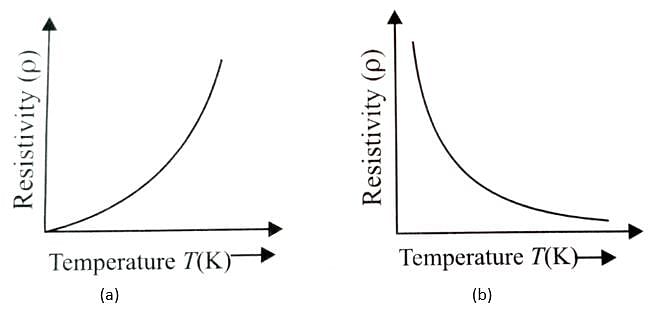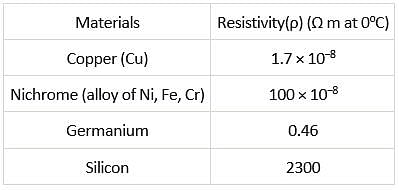Test: Factors affecting Resistivity & Power(13 Nov) - JEE MCQ
10 Questions MCQ Test - Test: Factors affecting Resistivity & Power(13 Nov)
Range of resistivity for metals is
The resistance of a heating element is 99Ω at room temperature. What is the temperature of the element if the resistance is found to be 116Ω? (Temperature coefficient of the material of the resistor is 1.7 × 10−4∘C−1)
| 1 Crore+ students have signed up on EduRev. Have you? Download the App |
The resistance of wire in a heater at room temperature is 65Ω. When the heater is connected to a 220V supply the current settles after a few seconds to 2.8A. What is the steady temperature of the wire. (Temperature coefficient of resistance α = 1.70 × 10−4∘C−1)
The resistivity of alloy manganin is
Figure (a) and figure (b) both are showing the variation of resistivity (p) with temperature (T) for some materials. Identify the types of these materials.

A wire has a resistance of 2.5Ω at 28∘C and a resistance of 2.9Ω at 100∘C. The temperature coefficient of resistivity of material of the wire is
The resistance of the wire in the platinum resistance thermometer at ice point is 5Ω and at steam point is 5.25Ω. When the thermometer is inserted in an unknown hot bath its resistance is found to be 5.5Ω. The temperature of the hot bath is
Arrange the following materials in increasing order of their resistivity,
Nichrome, Copper, Germanium, Silicon
What is the order of magnitude of the resistance of a dry human body?
Wire wound resistors are made by



























